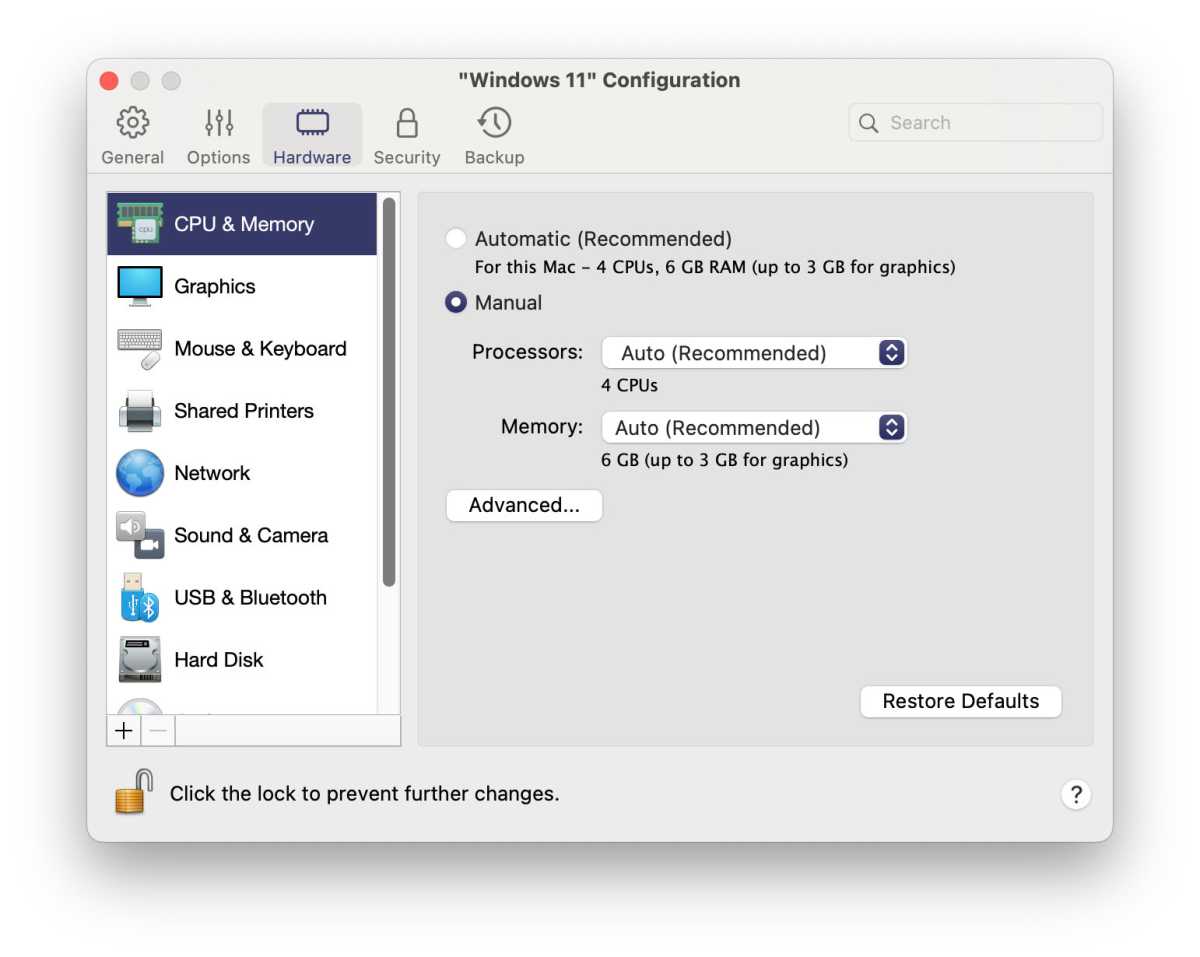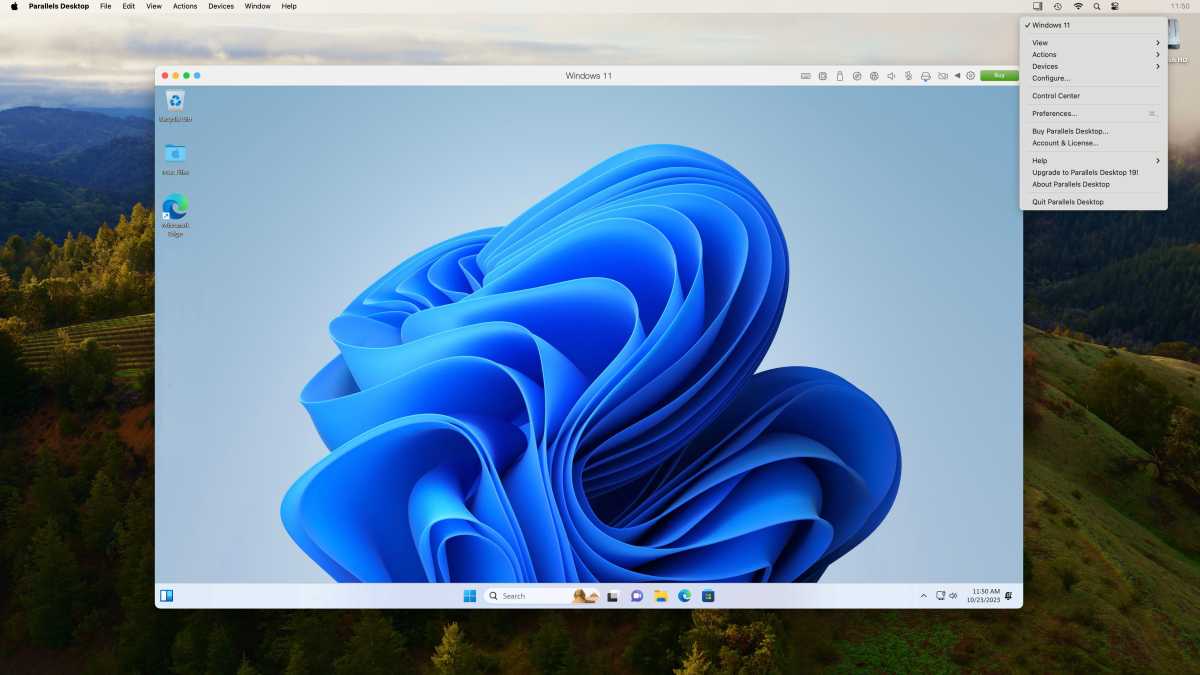Mac users who want to run Windows on their Mac have been able to do so since Intel processors came to Macs in 2006. Back then, it was easy to use Apple’s Boot Camp software to boot a Mac into Windows, how well your Mac could run Windows applications as if it were a PC (more or less). Additionally, solutions such as Parallels Desktop and VMware Fusion have enabled Macs to run Windows and Windows applications side-by-side with macOS and Mac applications.
However, in 2020, Apple began switching from Intel processors to its own Apple Silicon processors. Now, every Mac sold by Apple uses one of its own M-series processors, which offer much better performance than older Intel processors. Apple’s new processors are based on ARM technology, rather than the Intel X-86 architecture, and as a result these new Macs cannot use Boot Camp to run Windows. However, they can still install Windows using virtualization technology.
Although Apple no longer offers its own solution for those who want to run Windows on a Mac, Parallels Desktop, VMware Fusion, and other third-party solutions make it possible to install Windows on a Mac. Most of these solutions use virtualization technology to create a virtual machine – or VM – capable of running Windows and Windows software on a Mac. A virtu al machine is a regular Mac application, but it mimics – or emulates – the operation of a Windows PC, allowing you to run your Windows applications on the Mac desktop like any other Mac application. We tested a number of these options in our roundup of the best virtual machine software for Mac.
Boot Camp is always an option if you have a Mac with an Intel processor. Read the article on How to Install Windows on a Mac with an Intel Processor for help.
What you need to run Windows on an M-series Mac
If you want to run Windows in a virtual machine on your Mac, you need a fairly powerful Mac with plenty of memory and storage space available. This is because you need to allocate some of your Mac’s memory, storage space, and processor power to the virtual machine in order to install Windows and run your Windows applications properly. You probably won’t be able to play the latest 3D games on your Mac using a Windows virtual machine, but you should be able to run many productivity applications, such as Microsoft Office, as well as a number of desk top applications. design and graphics that may not be available on Mac.
There is, however, another complicating factor you may have to deal with when trying to create a Windows virtual machine on an Apple Silicon-powered Mac. You cannot install the standard version of Windows on a virtual machine if your Mac has an Apple Silicon* processor, because this version of Windows is written for Intel processors. You need an ARM version of Windows. (*Strictly speaking, it’s technically possible, but it’s very difficult and you won’t get very good performance).
How to Get Windows for Apple Silicon Macs
Apple’s M series of processors are known as Arm processors because they are based on designs licensed from a British company called Arm Ltd. There are other companies that also make Arm processors, such as Qualcomm’s Snapdragon chips, which are starting to appear in some of the latest Windows laptops. In order to run Windows on these Arm processors, Microsoft developed an alternative version of Windows known as Windows On Arm.
If your Mac has an Apple Silicon processor, you won’t be able to create a virtual machine using the Intel version of Windows, but you will be able to use Windows on Arm instead. The only problem here is that it’s actually a bit difficult to get Windows on Arm, because Microsoft doesn’t sell it directly to consumers and generally only licenses it to PC makers like HP, Lenovo or Dell. Fortunately, the team behind Parallels Desktop has worked closely with Microsoft and has been approved by Microsoft as the official solution for running Windows on Mac with Apple Silicon.
Parallels Desktop, recently updated to version 20, allows you to download and install Windows 11 On Arm directly from Microsoft when you create a new virtual machine. You can then purchase a license for your copy of Windows from the Microsoft Store running on your virtual machine. This opti on is currently not available with competitors such as VMware Fusion, so we’ll focus on Parallels Desktop to show how it’s done.
Read our Parallels Fusion review.
How to run Windows on a Mac (M series and later)
Download Windows on Arm

Screenshot
Foundry
As soon as you launch Parallels Desktop on a Mac with Apple Silicon, the application provides useful information about running Windows on Apple Silicon to help you get started.
It then asks if you want to download and install a copy of Windows 11 On Arm (because the Intel version of Windows won’t work on Macs with Apple Silicon). Unfortunately, this option to download Windows On Arm is currently not available in competing virtualization programs, such as VMWare Fusion.
When you run your new virtual machine for the first time, you will have the option to purchase Windows 11 On Arm from the Microsoft Store. If you already have a license for Windows 11, you may be able to use it here, or you can purchase a new license from Parallels Desktop.
Configure your virtual machine

Foundry
Once you have downloaded Windows, you can create and configure your new virtual machine. You can choose how many of your Mac’s CPU cores to dedicate to running the VM, which is a key factor that will determine how fast the VM runs. You can also specify the amount of memory and storage space allocated to the VM.
There are many other settings, such as the ability to control how Windows apps appear on the Mac desktop or how Windows and Mac apps can share files. Fortunately, Parallels offers standard settings that generally work well, and you can then experiment and fine-tune your VM as you get used to working with it.
Run Windows on your Mac

Foundry
Here is our Windows VM running on an iMac with a modest M1 processor. As you can see here, the VM boots into its own window, displaying the standard Windows desktop. However, Parallels Desktop also offers a Coherence mode that hides this window and simply shows your Windows apps floating on the main Mac desktop, just like regular Mac apps. You can adjust the display mode and other settings using the Parallels drop-down menu in the main menu bar.
Table of Contents








